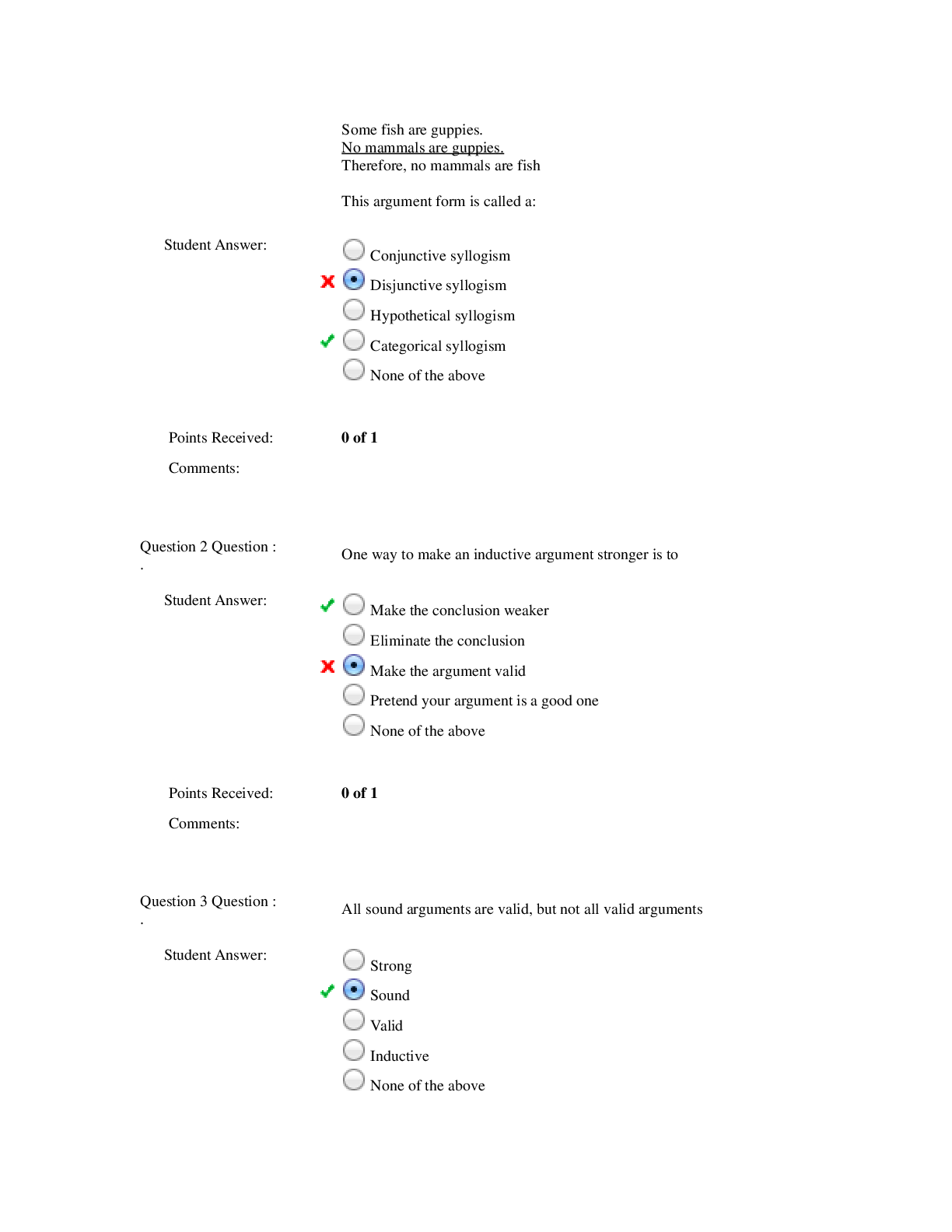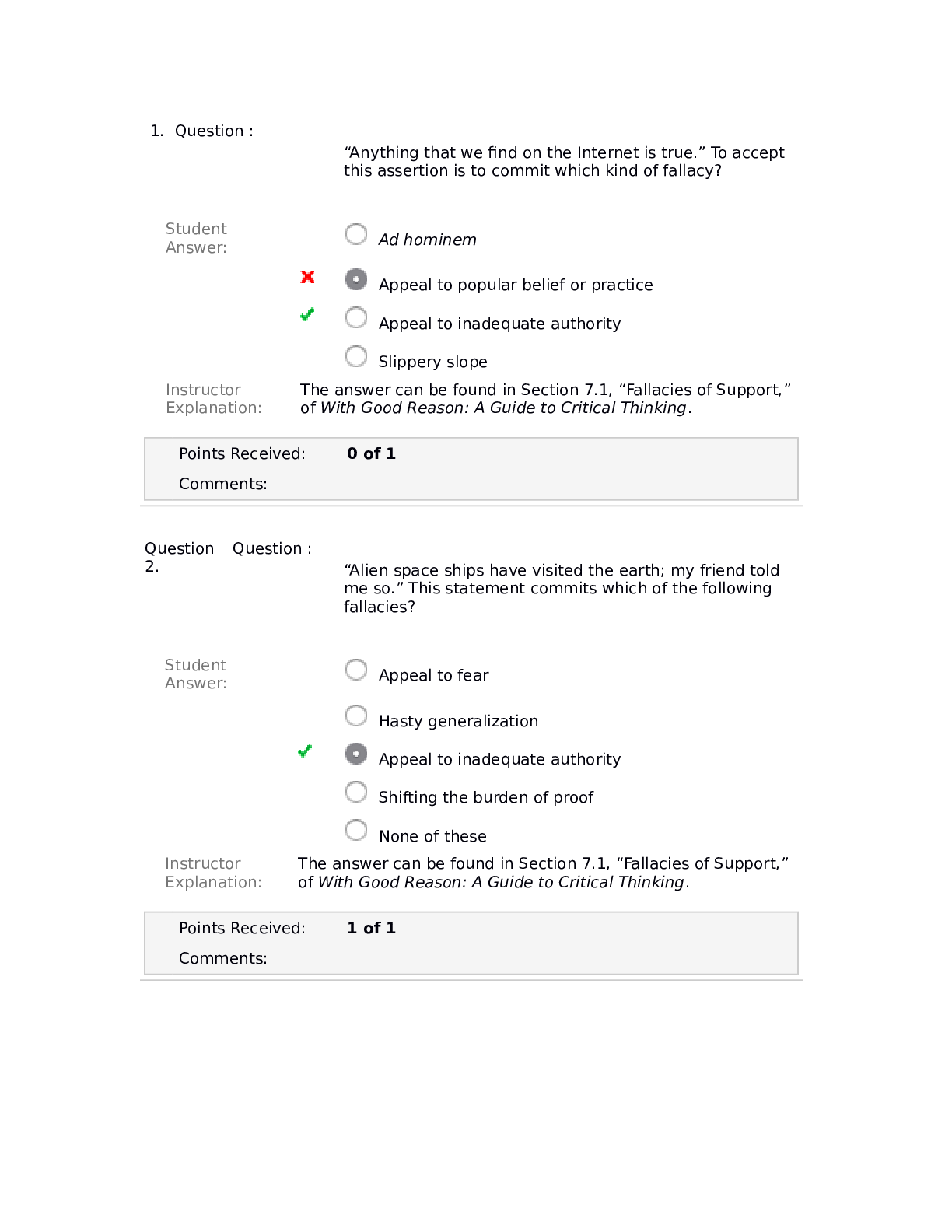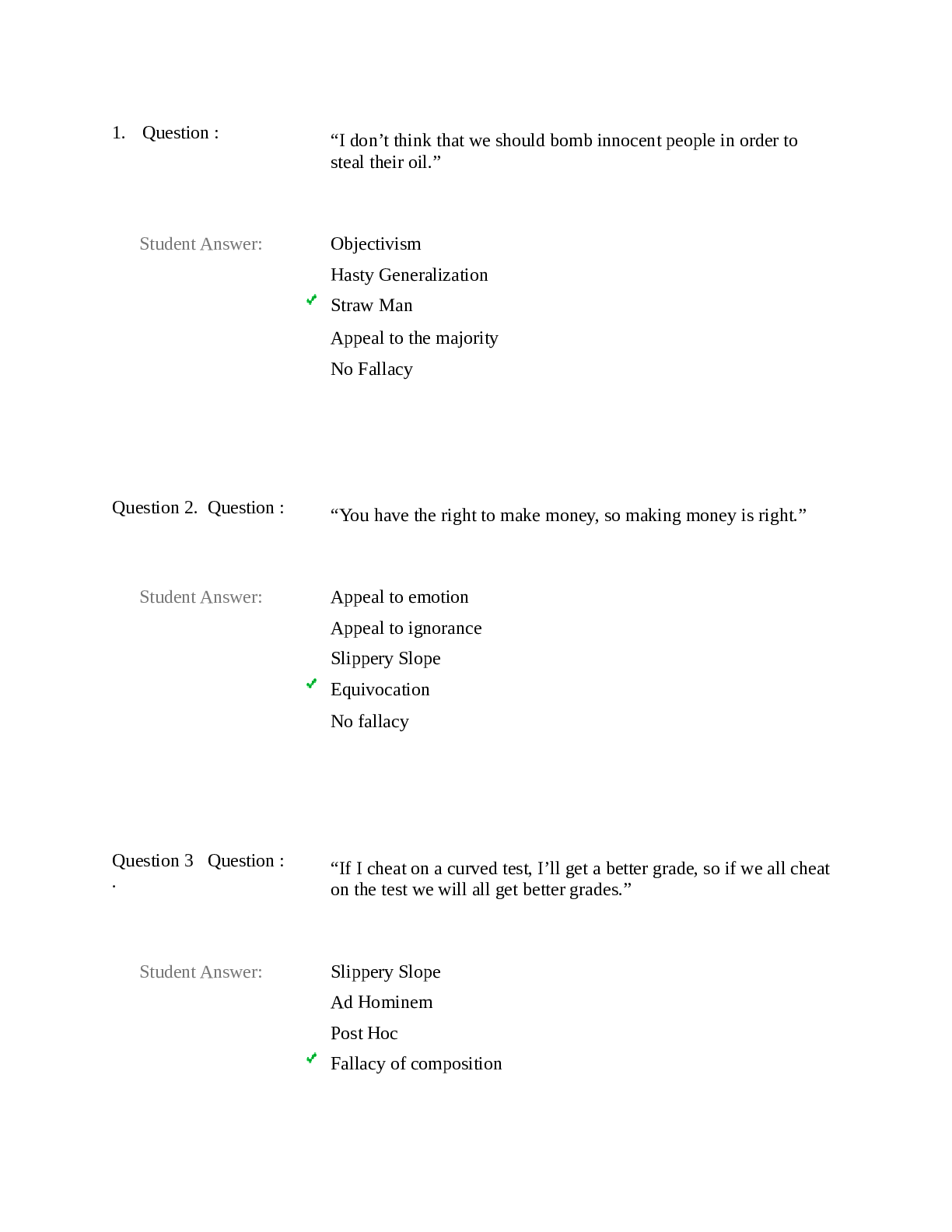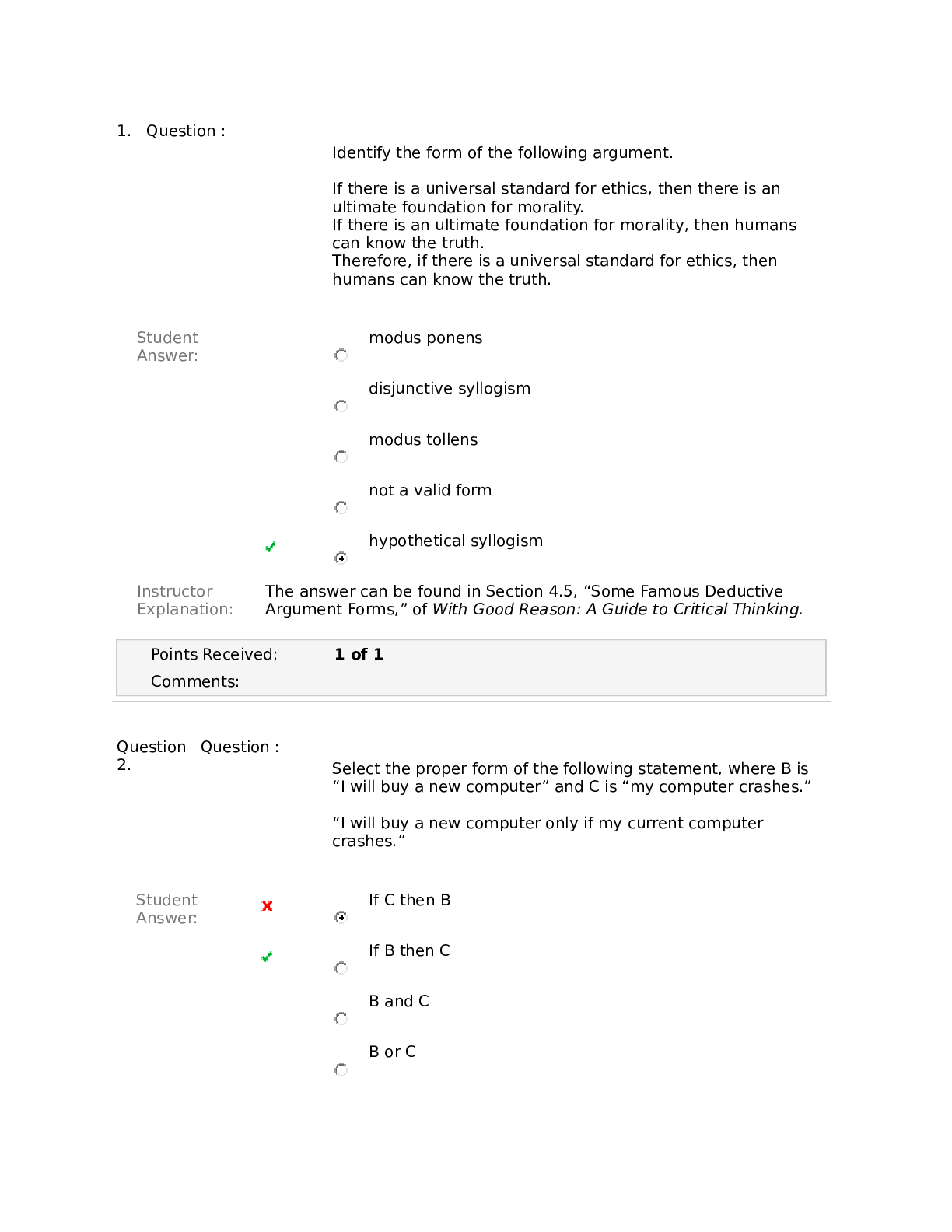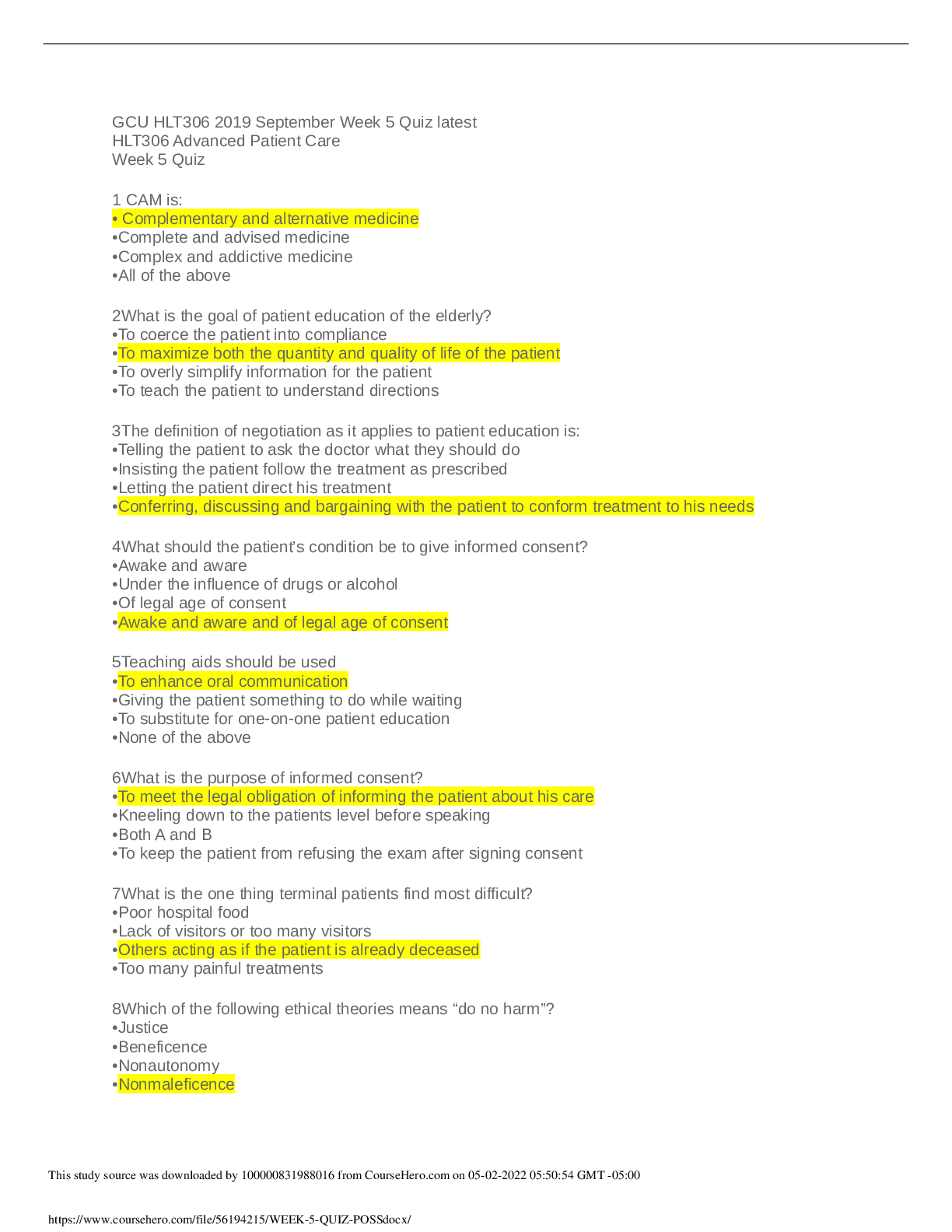Philosophy > QUESTIONS & ANSWERS > Ashford University PHI 103 Week 5 Quiz Latest Updated Score 100% (All)
Ashford University PHI 103 Week 5 Quiz Latest Updated Score 100%
Document Content and Description Below
These are the automatically computed results of your exam. Grades for essay questions, and comments from your instructor, are in the "Details" section below. Date Taken: 3/22/2016 Time Spent: 50... min , 40 secs Points Received: 14 / 20 (70%) Number of Attempts: 1 Question Type: # Of Questions: # Correct: True/False 1 1 Multiple Choice 19 13 Grade Details - All Questions Question 1.Question : The support in an argumentative essay __________. Student Answer: is the reason for accepting one’s premises is the main item for which one is arguing in a paper does not include theories is the problem that one is examining Instructor Explanation: The answer can be found in Section 9.2, “Strengthening the Argumentative Essay,” of With Good Reason: A Guide to Critical Thinking. Points Received: 1 of 1 Comments: Question 2.Question : An argument is invalid if and only if _____________. Student Answer: It is fallacious. It is possible for all of its premises to be true and the conclusion false. Its reasoning is strong and its premises are true. It has a false premise. Instructor Explanation: The answer can be found in Section 3.1, “Basic Concepts in Deductive Reasoning,” of With Good Reason: A Guide to Critical Thinking. Points Received: 0 of 1 Comments: Question 3.Question : TV Preacher: “Just a $50 love gift per month is all it takes to live a life of economic health and prosperity. God will reward your generous donation with ten times more blessings in your own life if you donate to our ministry.” Student Answer: Appeal to emotion No fallacy Equivocation Appeal to force False dilemma Instructor Explanation: The answer can be found in Chapter 7.2, “Fallacies of Relevance,” of With Good Reason: A Guide to Critical Thinking. Points Received: 0 of 1 Comments: Question 4.Question : According to the Venn diagram method, you can tell that a categorical argument is valid if ____________. Student Answer: the conclusion may or may not be true in the diagram there is no x in the conclusion the conclusion is shaded any diagram of the premises is also a diagram of the conclusion Instructor Explanation: The answer can be found in Section 3.6, “Categorical Logic: Categorical Syllogisms,” of With Good Reason: A Guide to Critical Thinking. Points Received: 0 of 1 Comments: Question 5.Question : You know Communism was going to fail! After all, Karl Marx was an alcoholic! Student Answer: Slippery slope No fallacy Ad hominem False cause False dichotomy Instructor Explanation: The answer can be found in Chapter 7.2, “Fallacies of Relevance,” of With Good Reason: A Guide to Critical Thinking. Points Received: 1 of 1 Comments: Question 6.Question : A sound argument is __________. Student Answer: All of these a valid argument in which it is impossible to have true premises and a false conclusion a valid argument with true premises a valid argument with true premises and a false conclusion an argument in which it is possible to have true premises and a true conclusion Instructor Explanation: The answer can be found in Section 3.1, “Basic Concepts in Deductive Reasoning,” of With Good Reason: A Guide to Critical Thinking. Points Received: 1 of 1 Comments: Question 7.Question : A premise can __________. Student Answer: act as a subthesis in an essay and fail to be supported act as a subthesis in an essay fail to be supported act as a subthesis in an essay and never support a conclusion never support a conclusion Instructor Explanation: The answer can be found in Section 9.1, “The Argumentative Essay,” of With Good Reason: A Guide to Critical Thinking. Points Received: 0 of 1 Comments: Question 8.Question : My father always only bought Ford cars. He said they were the best cars ever. So I only buy Fords. Student Answer: Begging the question No fallacy Post hoc Ad hominem Appeal to inadequate authority Instructor Explanation: The answer can be found in Section 7.1, “Fallacies of Support,” of With Good Reason: A Guide to Critical Thinking. Points Received: 1 of 1 Comments: Question 9.Question : Tom: Early humans had a simple form of music played on instruments made from animal bones and skins. Boris: How do you know that? Tom: Well, no one has proved that they didn’t. Student Answer: Appeal to authority No fallacy False dilemma Appeal to ignorance Appeal to popular opinion Instructor Explanation: The answer can be found in Section 7.1, “Fallacies of Support,” of With Good Reason: A Guide to Critical Thinking. Points Received: 1 of 1 Comments: Question 10.Question : All dogs are warm-blooded. All warm-blooded creatures are mammals. Hence, all dogs are mammals. The sentence, “Hence, all dogs are mammals,” is a premise in this argument. Student Answer: True False Instructor Explanation: The answer can be found in Section 2.2, “Extracting Arguments in the Standard Form,” of With Good Reason: A Guide to Critical Thinking. Points Received: 1 of 1 Comments: Question 11.Question : The principle of accuracy in logic is __________. Student Answer: the idea that one should state the strongest argument no matter the position the idea that scientific experiments need measures to ensure they produce good data the idea that one should interpret the argument in line with the way the author would state it the idea that we more clearly understand arguments that align with our beliefs Instructor Explanation: The answer can be found in Section 9.4, “Confronting Disagreement by Seeking Truth,” of With Good Reason: A Guide to Critical Thinking. Points Received: 1 of 1 Comments: Question 12.Question : The principle of c [Show More]
Last updated: 2 years ago
Preview 1 out of 27 pages

Buy this document to get the full access instantly
Instant Download Access after purchase
Buy NowInstant download
We Accept:

Reviews( 0 )
$13.00
Can't find what you want? Try our AI powered Search
Document information
Connected school, study & course
About the document
Uploaded On
Apr 28, 2022
Number of pages
27
Written in
Additional information
This document has been written for:
Uploaded
Apr 28, 2022
Downloads
0
Views
226


.png)


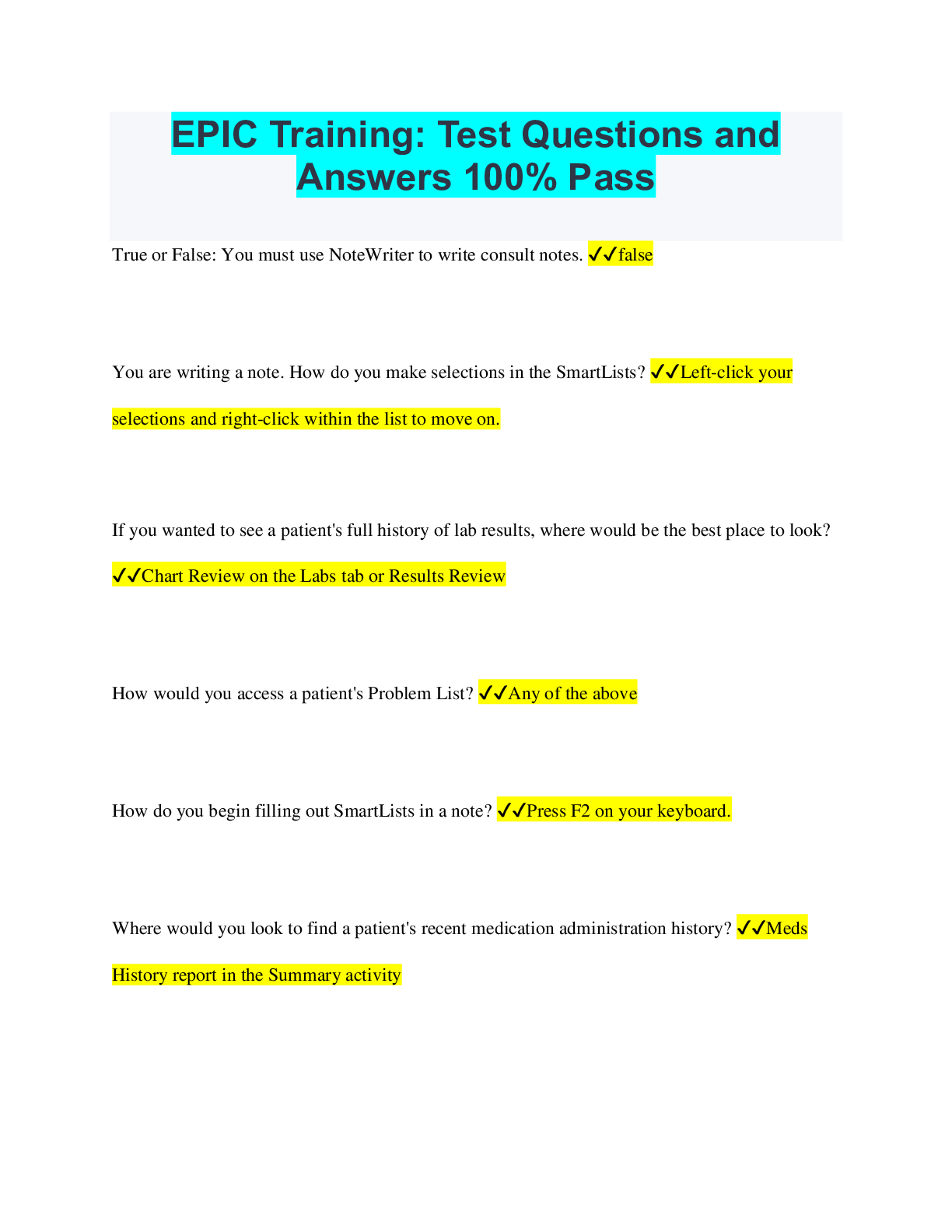
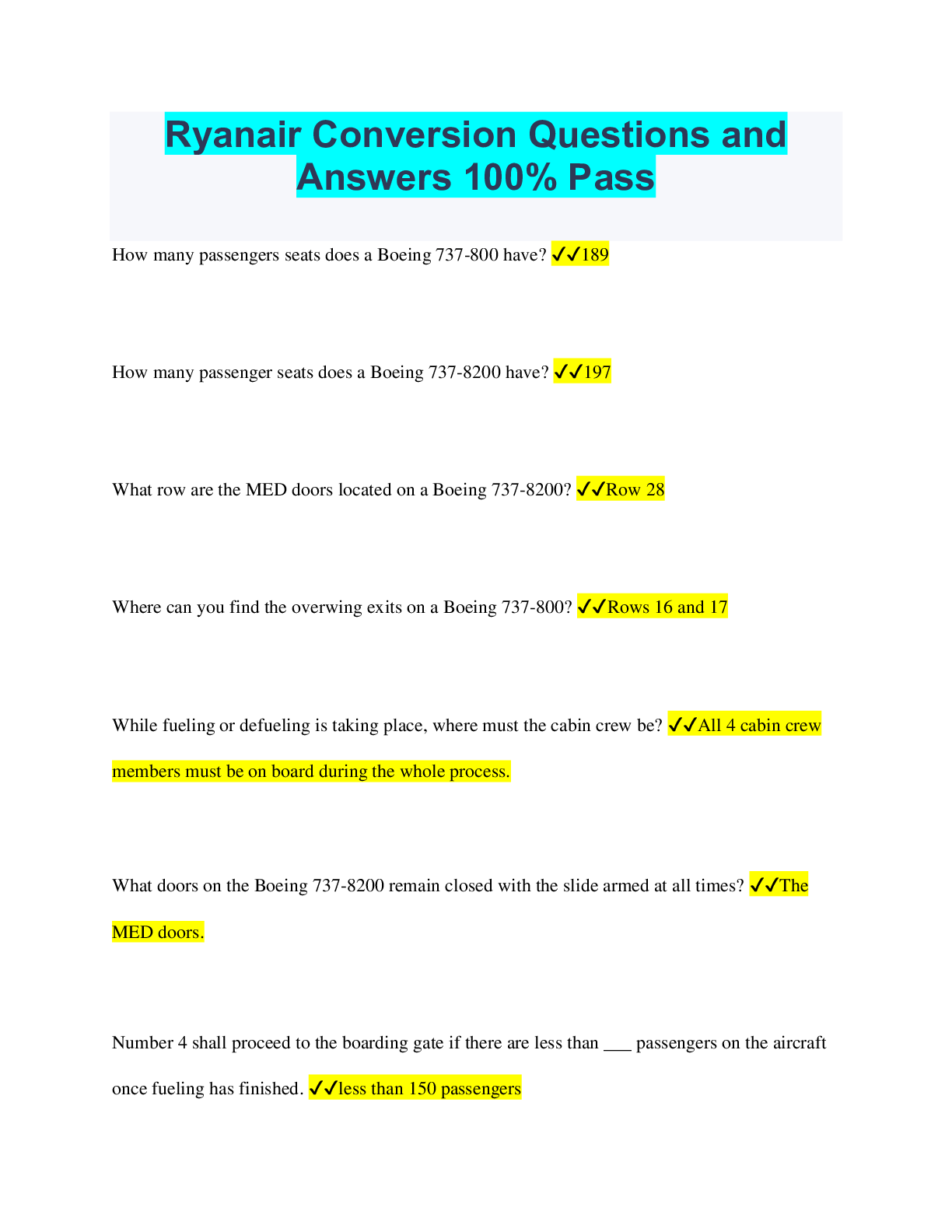


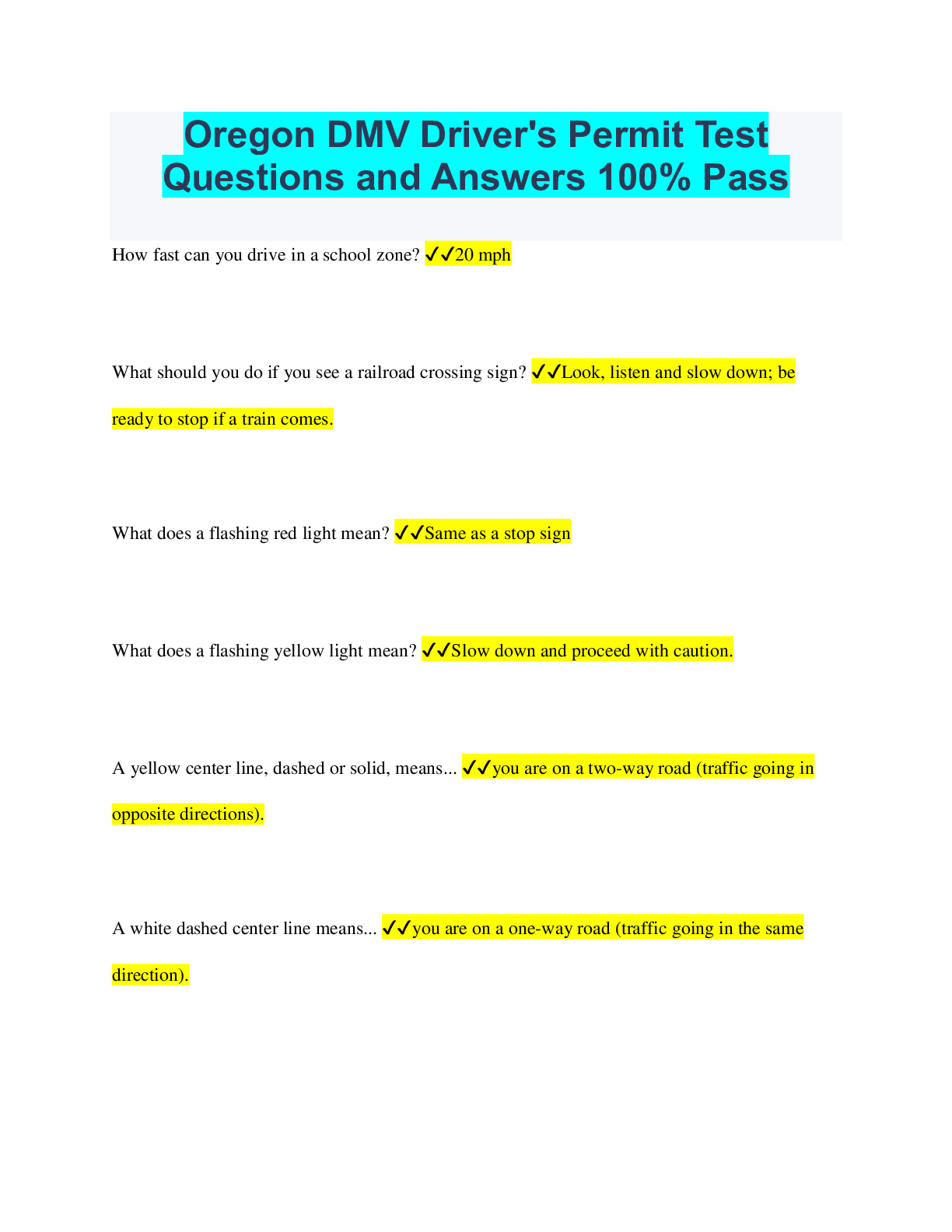

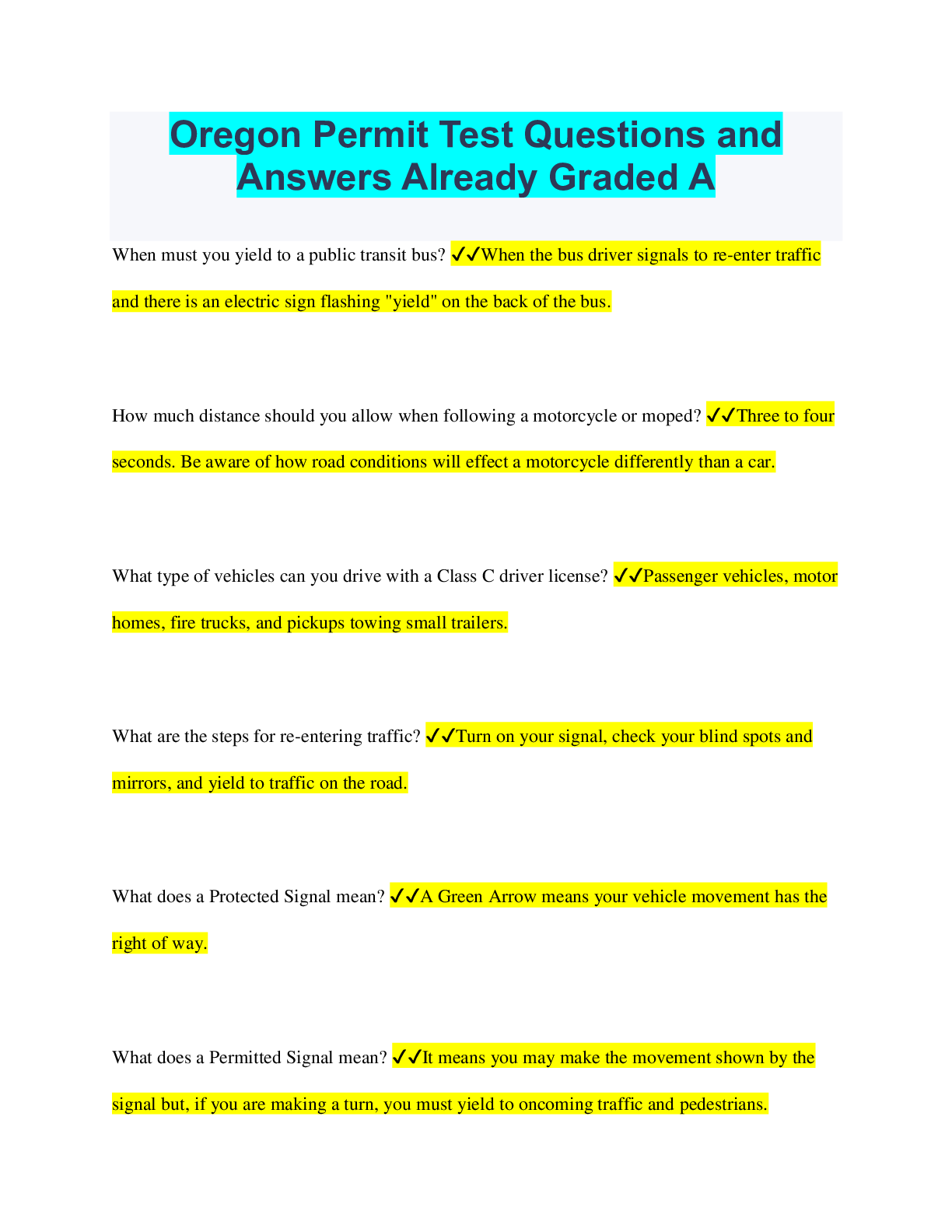
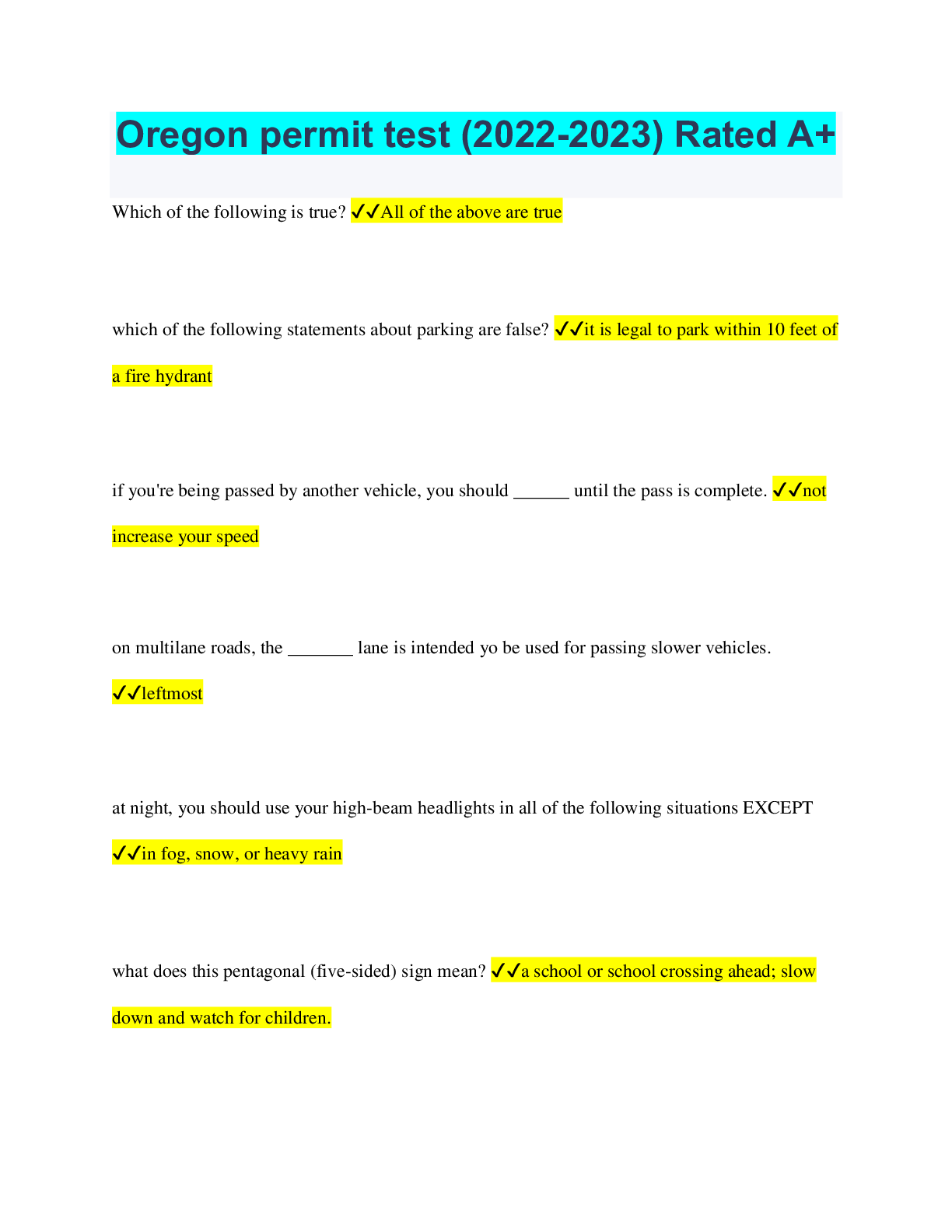
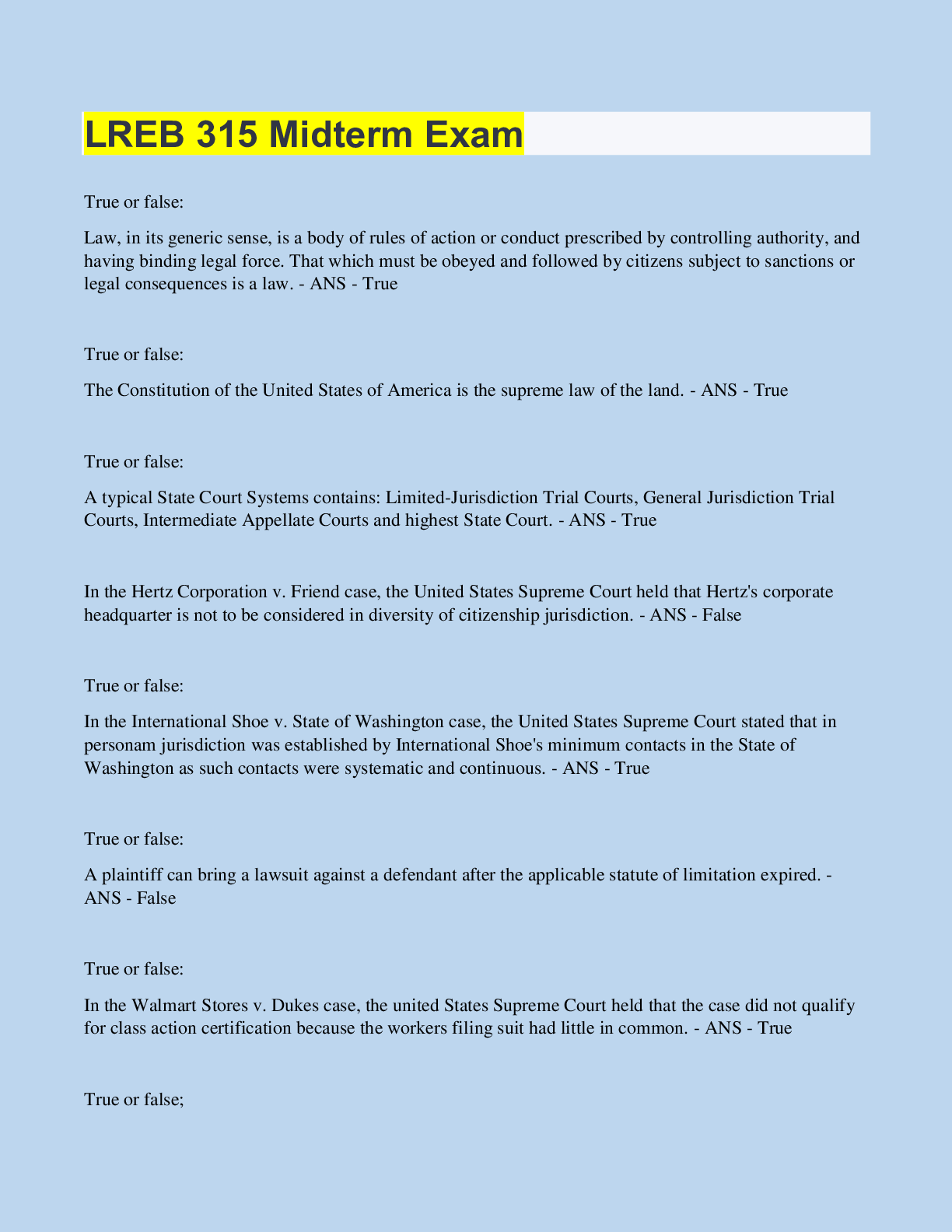

.png)

